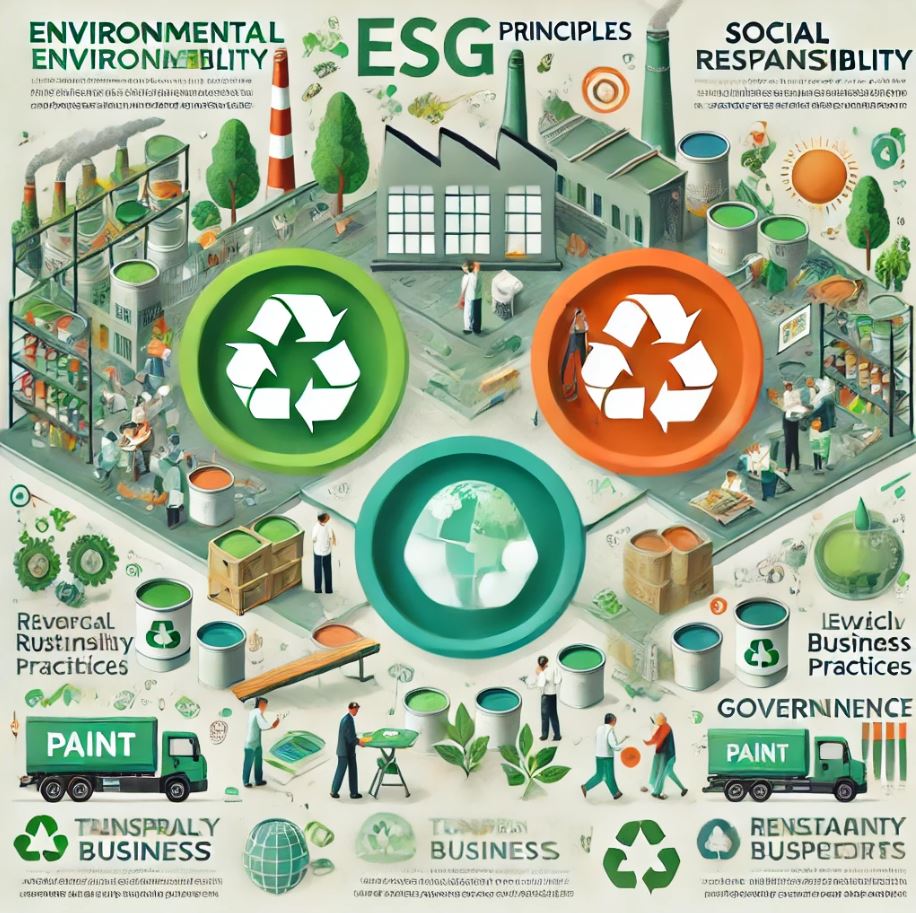The concept of ESG (Environmental, Social, Governance) is becoming increasingly important in the paint industry as companies face growing pressure to operate in a sustainable and responsible manner. Applying ESG principles is not just about compliance but also an opportunity for innovation, reputation building, and long-term sustainability. In this context, paint companies are required to redefine how they produce and distribute their products with a focus on environmental, social, and governance responsibility.
Environmental Aspect
In the paint industry, the environmental aspect of ESG primarily focuses on the impact of raw materials, production, and the use of paints on the natural environment. Traditionally, many paints contain hazardous chemicals, such as volatile organic compounds (VOCs), which can harm the atmosphere and human health. To meet ESG requirements, companies are seeking ways to reduce or eliminate these compounds.
The development and promotion of eco-friendly paints that contain no toxic substances and are produced with a low carbon footprint is a significant step in this direction. Furthermore, paint manufacturers are exploring methods for recycling and reusing materials to reduce waste and promote the circular economy.
Sustainable production is not just about the products themselves but also the production process. Paint companies that invest in clean technologies, renewable energy sources, and methods to reduce carbon dioxide (CO2) emissions are ensuring that they contribute to minimizing environmental impacts.
Social Aspect
The social aspect of ESG concerns practices that directly affect employees, communities, and consumers. In the paint industry, this can involve worker safety during production, promoting equality in the workplace, and responsible sourcing of raw materials.
Creating safe working conditions is fundamental. Workers in the paint industry, particularly those involved in the handling of chemicals, must be protected from hazardous exposure. Additionally, many companies are taking initiatives to train their employees, ensuring they have the knowledge and skills to handle products safely and responsibly.
Social responsibility extends beyond the company’s internal operations. Businesses are called upon to support local communities, whether through job creation or social initiatives such as promoting education in environmental awareness.
Governance
Governance is the third pillar of ESG and relates to transparency, ethics, and responsibility in business management. Transparency in the sourcing of raw materials, responsible business practices, and compliance with international standards are critical elements for strengthening a company’s reputation.
In the paint industry, strict monitoring of the supply chain is essential. Companies must ensure that their suppliers meet stringent environmental and social criteria. Responsible governance also includes engaging shareholders in decisions related to sustainable development and strengthening workers’ rights.
Conclusion
Applying ESG principles in the paint industry is not only an opportunity for regulatory compliance but also a strategic advantage. Companies that adopt sustainable practices, social responsibility, and transparency can enhance their reputation, gain a competitive edge, and meet the growing demands of consumers and investors. In a rapidly changing world, ESG offers the path toward a strong, sustainable, and profitable future for the paint industry.

